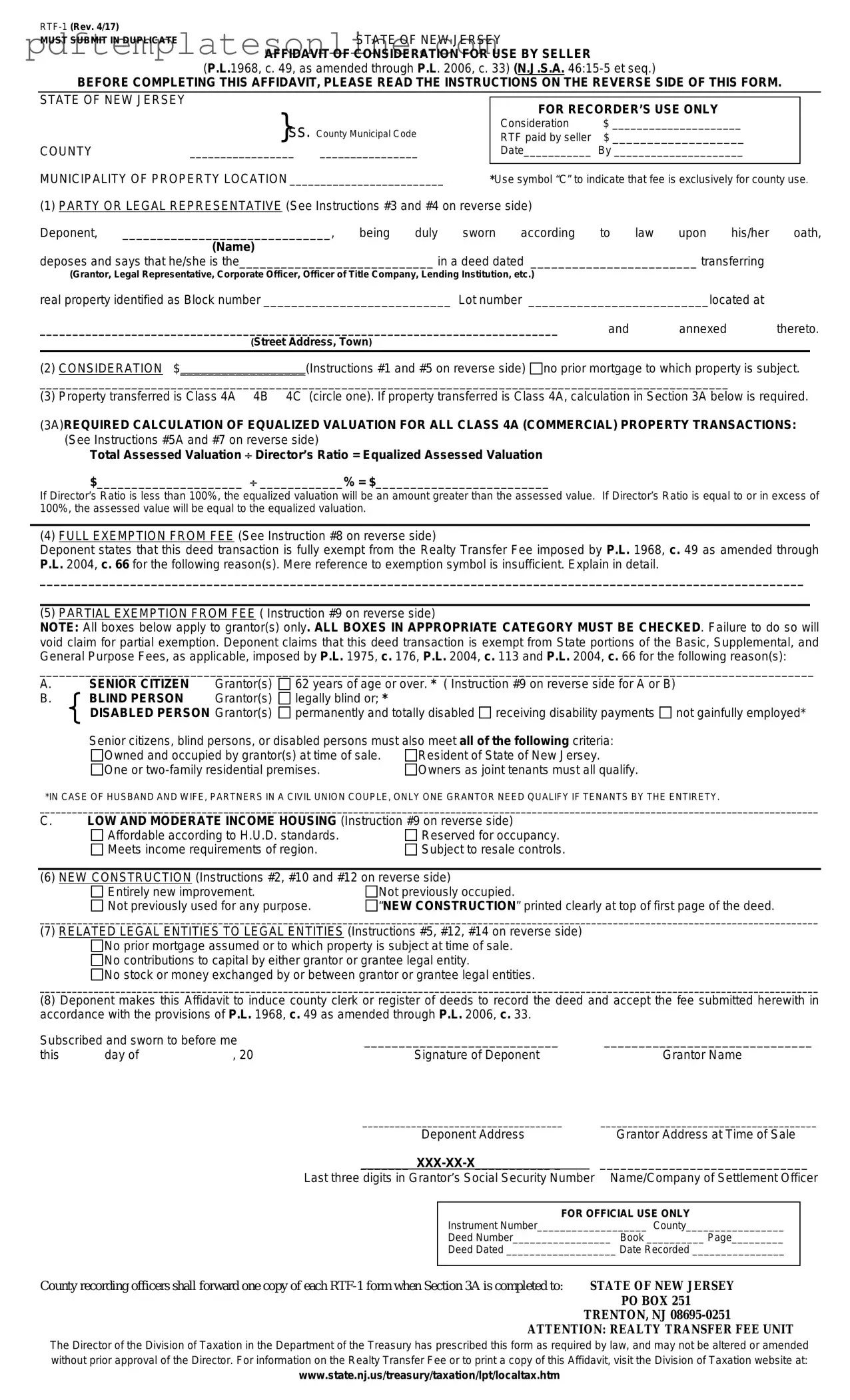Filling out the New Jersey Affidavit of Consideration RTF-1 form can be straightforward, but many individuals make common mistakes that can lead to delays or complications. One frequent error is not providing complete information. Each section of the form must be filled out accurately. Leaving out details, such as the full names of the parties involved or the property address, can cause the form to be rejected.
Another mistake is failing to sign the affidavit. The form requires the signatures of both parties to validate the information provided. Without signatures, the affidavit lacks authenticity, and the transaction may not proceed as planned. It is crucial to double-check that all required signatures are present before submission.
Some individuals overlook the importance of the date on the form. The affidavit must be dated correctly to reflect when the transaction occurred. An incorrect date can create confusion and may even lead to legal issues down the line. Always ensure that the date matches the actual transaction date.
Additionally, people often misunderstand the section regarding the consideration amount. The form requires a clear statement of the consideration, which refers to the value exchanged in the transaction. Misrepresenting this amount, whether intentionally or accidentally, can have serious implications. It is essential to provide an accurate figure that reflects the true value of the transaction.
Another common oversight is not providing supporting documentation. While the affidavit itself is important, additional documents may be required to substantiate the claims made within it. Failing to include these documents can lead to delays in processing or questions about the legitimacy of the transaction.
Lastly, some individuals neglect to review the completed form before submission. Errors can easily slip through the cracks, especially if the form is filled out in a hurry. Taking the time to review the affidavit for accuracy can prevent issues and ensure that the transaction proceeds smoothly.
